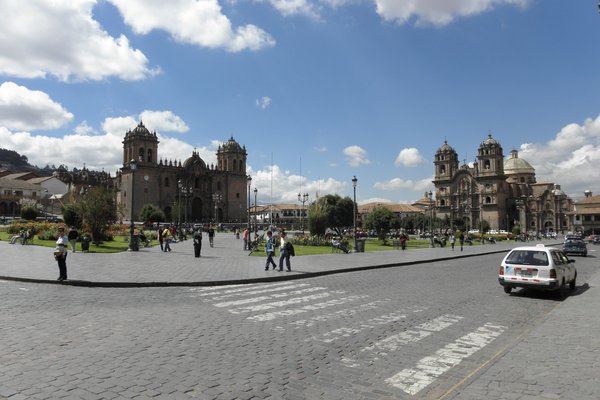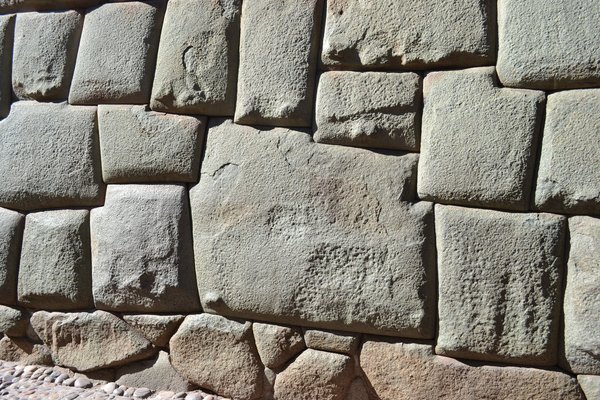Peru
Cuzco
The City of Cuzco combines the cultures of the Inca capital and the Hispanic colony.
The Incas developed the city in the late 15th century for their imperial government that ruled over much of the Andes. They aimed to create an ideal town, with administrative and religious functions in the center and agriculture and industrial production in the outlying areas. The first Spaniards arrived in the city in 1533. They constructed their own buildings (catholic churches, mansions) on the demolished walls of the Inca buildings, but left the city layout intact. These buildings are of Spanish influence with a mix of Inca architecture.
Community Perspective: the “sense of history and the past resonates strongly as you walk the streets of Cuzco”. It’s also a major tourist hub. As it lies at an altitude of 3,400m: take it easy.
Site Info
Official Information
- Full Name
- City of Cuzco (ID: 273)
- Country
- Peru
- Status
-
Inscribed 1983
Site history
History of Cuzco
- 1983: Inscribed
- Inscribed
- Type
- Cultural
- Criteria
- iii
- iv
Links
- UNESCO
- whc.unesco.org
- Official
-
- peru.travel — Cusco by Peru Travel
- Related
-
- en.wikipedia.org — Wikipedia on Cathedral of Santo Domingo, Cusco
- qosqo.com — Qorikancha
All Links
UNESCO.org
- whc.unesco.org — whc.unesco.org/
Official Website
- peru.travel — Cusco by Peru Travel
Related Resources
- en.wikipedia.org — Wikipedia on Cathedral of Santo Domingo, Cusco
- qosqo.com — Qorikancha
News Article
- Feb. 19, 2025 france24.com — Peru's 12-Angle Stone vandalized, causing 'irreversible damage'
- Sept. 17, 2016 bbc.com — Cuzco: Fire destroys 16th Century church
- April 1, 2008 news.nationalgeographic.com — A temple thought to have once housed idols and mummies has been unearthed near an ancient Inca site in Cuzco
- Feb. 26, 2008 voanews.com — Peruvians Protest Tourism Plans in Ancient City
Community Information
- Community Category
- Urban landscape: Latin American
Travel Information
Exact locations inscribed twice (or more)
Recent Connections
-
Perfect Inscriptions
1983 -
Visited by Nicolas Hulot
Twelve-angled stoneSee www.youtube.com
-
In Disney and Pixar Animation Classics
The Emperor's New Groove
Connections of Cuzco
- Individual People
-
-
Mapped or Illustrated by Blaeu
On top frieze of "Americae nova tabula" (1617)See luna.folger.edu
-
Elias Burton Holmes
1935See www.taschen.com
-
Tupac Inca Yupanqui
reigned from it -
Francisco Pizarro
Invader -
Visited by Nicolas Hulot
Twelve-angled stoneSee www.youtube.com
-
- Geography
-
-
Highest cultural WHS
3,399 m -
Andes
3400m - "located in a fertile alluvial valley fed by several rivers in the heart of the Central Peruvian Andes of South America" (OUV) -
Amazon Basin
At the Huatanay river, which trickles eventually into the Amazon
-
- Trivia
-
-
On beer cans and bottles
The Cusqueña beer bottle has a reliëf that represents the Twelve-angled stone in Cuzco.See designers.org
-
Built or owned by Spanish
The first Spaniards arrived in the city on 15 November 1533. Francisco Pizarro officially arrived in Cusco on 23 March 1534, renaming it the "Very noble and great city of Cuzco". The many buildings constructed after the Spanish invasion have a mixture of Spanish influence with Inca indigenous architecture, including the Santa Clara and San Blas neighborhoods. The Spanish destroyed many Inca buildings, temples and palaces. They used the remaining walls as bases for the construction of a new city. (wiki)
-
- History
-
-
Qhapaq Nan (Inca)
Starting point of the routes -
Located in a Former Capital
Inca Empire 13th Century - 1533 -
Sieges and Battles
Siege of Cuzco (May 6, 1536 - March 1537)See en.wikipedia.org
-
Built over the ruins of an Incan city
-
- Architecture
- Damaged
-
-
Destroyed or damaged by Earthquake
21 May 1950. An "earthquake shook the city, causing the destruction of more than one third of the city's structures." (Wiki) and "The major earthquake that hit Cusco in 1950 badly destroyed the Dominican Priory and Church of Santo Domingo, which were built on top of the impressive Korikancha (Temple of the Sun). The city's Inca architecture, however, survived the earthquake. Many of the old Inca walls were thought to have been lost after the earthquake, but the granite walls of the Koricancha were exposed, as well as many walls throughout the city. While some wanted to restore the buildings to their colonial splendor, some of Cusco citizens urged city officials to retain the exposed walls. Eventually they won out and now tourists from around the world enjoy looking at these ruins within the living city" (Simple Wiki). In 1951 UNESCO was called in to report on actions to be taken - see report
-
- World Heritage Process
-
-
Exact locations inscribed twice (or more)
Its central square is also part of Qhapaq Nan -
Perfect Inscriptions
1983 -
First inscriptions
Peru: two inscriptions in 1983, with City of Cuzco as the first recorded and with the lowest number
-
- Religion and Belief
-
-
Holiest place
The Temple of the Sun was holiest place for the Inca. -
Mercedarians
in 1534, Father Sebastian de Castaneda founded the convent of Cuzco, the capital city of the Incan Empire, which would soon become a major evangelization center from which frequent missionary expeditions would leave for more remote areas.See orderofmercy.org
-
Dominican Order
Santa Domingo Church and Convent, built over the Inca Koricancha (temple to the Sun) -
Cathedrals
Santo Domingo -
Axis Mundi
-
- Human Activity
-
-
Festivals
Inti Raymi (Sacsahuyaman) - Jun 24 -
Cuzco School of Painting
-
Mummies
"Royal Mummies" kept at Cuzco were all destroyed by the conquistadores. Cuzco museum still has other mummies.
-
- Constructions
-
-
Passage of the Sun
Temple of the Sun
-
- WHS on Other Lists
-
-
World Monuments Watch (past)
Cusco Historic Center (2002, 2000, 1996)
-
- Timeline
-
-
Built in the 15th century
Flourished as Inca capital in 15th century (Coricancha (Temple of the Sun) constructed 1432)
-
- Literature & Film
-
-
Patrimonito's World Heritage Adventures
-
In Disney and Pixar Animation Classics
The Emperor's New Groove -
Tintin
The Seven Crystal Balls / Prisoners of the Sun.
-
News
- france24.com 02/19/2025
- Peru's 12-Angle Stone vandalized, …
- bbc.com 09/17/2016
- Cuzco: Fire destroys 16th Century …
- news.nationalgeographic.com 04/01/2008
- A temple thought to have once hous…
Recent Visitors
Visitors of Cuzco
- AC
- Adrian Turtschi
- Albert
- Alberto Rodriguez Gutierrez
- Alejandro Lau
- alex
- Alexander Barabanov
- Alexander Parsons
- AlexSchedel
- Ali Zingstra
- ALS
- Ammon Watkins
- Ana
- Andrea Szabo
- Angela Vandyck
- Anna Wludarska
- Anne
- Argo
- Artsybrea
- Artur Anuszewski
- Aspasia
- Atila Ege
- Bamse
- basementonline
- Bauchat
- BaziFettehenne
- BenReeve
- bergecn
- Bill Maurmann
- Bin
- Bram de Bruin
- brornt
- butterflybird
- Carlo Medina
- Carlo Sarion
- Carlos Sotelo
- CeeMon
- cflw
- Chantal den Haan
- chenboada
- Chinmaya
- chiuliqi
- ChrisN
- Christoph
- Christravelblog
- Cirene Moraes
- Claire Bradshaw
- Clyde
- Col
- Colossus
- Corinne Vail
- Crinion
- Cristina Erba
- Csaba Nováczky
- CynthiaSam
- czesioszpachelka
- daneva
- Daniela Hohmann
- Daniel Chazad
- Daniel Gabi
- Danieljbromberg
- dave wood
- David Marton
- David Scott King
- del
- Delphine Delaunay
- Dennis Nicklaus
- Dimitrios Polychronopoulos
- Dirk-pieter
- DjhMck
- DL
- Don Irwin
- DouglasR
- Dwight Zehuan Xiao
- edstar500
- Els Slots
- emvcaest
- Erfe91
- Erik Jelinek
- Eva Kisgyorgy
- Fan Yibo
- fedemarch92
- Feldhase
- Felicité
- Fernweh
- Filip Murlak
- Francky D'Hoop
- Frédéric M
- Frederik Dawson
- Gabbro
- GabLabCebu
- Geert Luiken
- George Gdanski
- Gernot
- Gilles
- giloudepuertorico
- giulio25
- Hammeel
- HaraldOest
- Harald T.
- Harry Mitsidis
- H Beswick
- Hdhuntphotography
- Hdwilsonau
- headventure
- hotpickle
- Hughes1920
- Hunstow
- Iain Jackson
- Ilya Burlak
- Ingrid
- IreneKD
- irosey
- Jacob Choi
- Jacob Otten
- janis
- Jan Korpeg
- Janos
- Jan Zimmermann
- Jarek Pokrzywnicki
- Jasonfd247
- Javier Coro
- Jay T
- jballard650
- Jeanne OGrady
- Jens
- Jim
- JL
- J_neveryes
- João Aender
- Joel on the Road
- John Smaranda
- jonathanfr
- Jon Eshuijs
- Jon Opol
- Joyce van Soest
- JR's HERITAGE SITES
- Juha Sjoeblom
- Justin
- KarenBMoore
- Karito Vies
- Kasper
- kayakka
- Kayimi
- Kbecq
- KeithBailey
- Kelly Rogers
- kelseyyurek
- Kevin McFarland
- kiank37
- Kjlauer
- Kjsisney
- Krijn
- Kurt Lauer
- Kyle Magnuson
- Lameduck99
- leroykstlj
- Liamps91
- lindaann
- Linz
- Little Lauren Travels
- Loic Pedras
- Lucio
- Ludvan
- Luis Filipe Gaspar
- Lukasz Palczewski
- lynnz317@aol.com
- Maciej Gil
- Malgorzata Kopczynska
- manuel011197
- Marcobrey
- Mariam
- Marlies van Wolfswinkel
- Martin
- maryhattie
- Mathijs
- Matthewsharris
- Max
- M.HATADA
- Michael Ayers
- MichaelH
- Michael Novins
- Michael Turtle
- Mihai Dascalu
- Mikko
- Milan Jirasek
- MMM
- Monica Tasciotti
- montgomw
- Morodhi
- MWaters66
- Naim Y
- nan
- natlefebvre@hotmail.
- Niall Sclater
- Nicolas
- Nicole Lampos
- Nihal Ege
- PabloNorte
- Palimpsesto
- Patrik
- Paul Schofield
- Pchxiao
- Philipp Leu
- Philipp Peterer
- phillipmeng
- Pierre T
- Pink Bunny
- Piotr Wasil
- Pradip Tripathy
- Priyaranjan Mohapatra
- puessergio
- Rafabram
- Ralf Regele
- Ralf Rotheimer
- Randi Thomsen
- Reza
- Riccardo Quaranta
- Rob Wilson
- Roman Bruehwiler
- RYU
- sakohju
- Samy G
- Sandmann15
- Sandra!
- sbshipway
- Sclowitz
- Sergio Arjona
- Shandos Cleaver
- sibariam
- Simonf
- Slavi
- sliny
- Solivagant
- Sorel Americo
- Spike Zou
- Squiffy
- Ssong.x
- Stanislaw Warwas
- Stefan Loov
- stephanvermeulen
- Sutul
- Svein Elias
- Szabolcs Mosonyi
- Szucs Tamas
- Tatiana Nikulnikova
- Tcchang0825
- Tevity
- TheTravelingRanger
- Thomas Buechler
- Thomas van der Walt
- Tim Allen
- Timonator
- Timothy C Easton
- TimPick
- Tinuszke
- tony0001
- Traveling Girl
- Vernon Prieto
- vhorne
- Viaje al Patrimonio
- vino4vino
- V&M
- Walter
- Waters88
- Waxwing
- Wojciech Fedoruk
- Xiquinho Silva
- Yongcheng Liu
- Zach
- zfish
- Zizmondka
- Zoë Sheng
Community Reviews
Show full reviews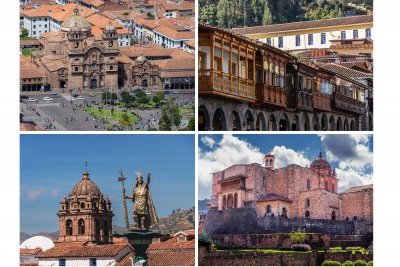
I visited Cuzco in May of 2024. Echoing the previous reviewers, it is a lovely living town with a visible exceptional blend of pre-Columbian and Colonial design, boasting a number of superb points of interest.
The central plaza is the focal point of the historic center, presided over by two magnificent churches. La Compania is primarily interesting from the outside, while the cathedral unusually feels like being made up of three side-by-side churches and offers an additional highlight of the "Andean" Last Supper painting, featuring guinea pig as the main course and Francisco Pizarro as Judas. Balconies of the buildings surrounding the main square - and all around the town - are another visual highlight.
Quite a few other churches are worth stopping by or stepping into, but most importantly just walking around the central precincts of Cuzco (or climbing up to San Blas or San Cristobal) brings you to many fetching corners and perspectives.
Qorikancha is one of the top attractions in Cuzco, consisting of the Santo Domingo monastery built on top of the Inka temple. If you are into history and ethnography museums, both Museo Inka and Museo de Arte Precolombiano will be of interest to you with their superb collections. Keep in mind that none of the three attractions in this paragraph, nor the cathedral, are included in the Boleto Turistico.
Saqsaywaman and Qenqo are included in the Boleto and are located on one of the higher elevations right at the edge of …
Keep reading 0 comments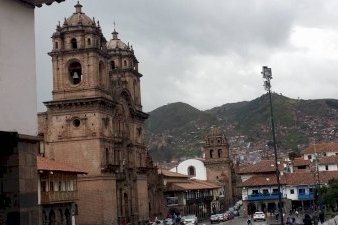
WHS#27
Cuzco is like the most quintessentially South American city, and yet, there's no other quite like it. It's truly an amalgamation and conglomeration of indigenous and colonial cultures; amalgamation because all these aspects have formed a single fused culture of today's Cuzco, but also a conglomeration in that each specific origin is distinguishable and provides interesting contrasts to the experience of visiting here. It's got this historic core made up of several neighborhoods of colonial architecture with some traces of the precolonial Inca city, surrounded by the modern city of Cuzco. This historic core is off limits to big tour buses and modern concrete buildings, but not from fun things to do even for those less interested in the rich history of the city; it's a great culinary destination with everything from excellent contemporary Peruvian cuisine and chocolate museums to traditional Andean delicacies and street popcorn. The hotels all seemed to lack elevators, but there was a nice laundry shop and a grocery a few steps away from my hotel. It's a living, modern city just as much as it's one of the most important historic centers of Native American culture, and I'm so glad I was able to visit in April 2016.
I arrived and left by Peru Hop, which I highly recommend. This is how I found out that tourist buses weren't allowed into the historic centre, since we had to transfer into smaller vehicles at the office in the modern city. They have an …
Keep reading 0 comments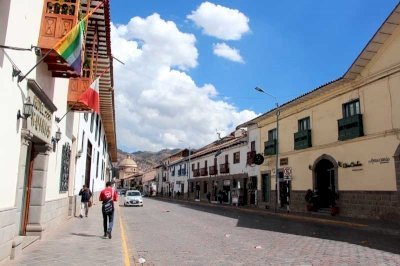
Visit: June 2019. With all the interesting places around the town (hub to Machu Picchu, Sacred Valley) it’s easy to forget that Cuzco is actually a really nice town. There are numerous colonial towns in South America and they are not easy to tell apart. Cuzco is different. The colonial town is built on the old Inca town and the large Inca stones still build the foundation of many houses. The narrow cobblestone streets make Europeans feel home. Such a pity cars are still allowed to drive through these streets and make them dangerous to walk. Its location between hills and the special Inca touch make it easily the most scenic town in Peru. Even though it is possible to see the town’s highlights within a day, thanks to its infrastructure Cuzco is the perfect base to discover the area. Roam the countless travel agencies for good deals on Manu NP tours and day trips to the Sacred Valley. I even found a cheap bus trip to Machu Picchu there.
Avoid the time between around October and March if possible. The rainy season is not very pleasant. June till August the weather is mostly nice. It’s also festival season, where countless parades and the famous Inti Raymi take place. Celebrations take the whole day and are primarily from locals for locals, but it’s fun to dip in for a while and soak up the culture.
Cuzco is on the route of the Peru Hop buses, that also covers …
Keep reading 0 comments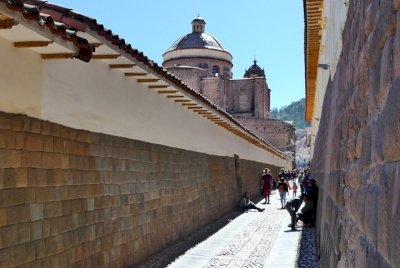
I visited this WHS in June 2019 and allowed 5 nights to explore the historic centre and the several sites around Cusco. It was a very welcome change from Lima even though there were many more tourists here. There are so many sites to see though and different festivals going on in June that it rarely felt crowded or congested except close to the main square.
If you intend to visit different sites around the Sacred Valley, make sure to buy the bolleto general which costs 130 soles and is valid for 10 consecutive days. It would cost way to much if you were to pay around 70 soles for each and every site. Apart from several minor monuments and museums (most interesting being the one of Qorikancha in Cusco), it will give you access to several Inca sites, namely Sacsayhuaman (best to visit before sunset), Qenqo, Puka Pukara and Tambomachay (these 4 can easily make up a worthwhile half day); Pisac and Ollantaytambo (quite a way from Cusco but a worthwhile stop on the way to/from Aguas Calientes and Machu Picchu); Moray and Chinchero (another worthwhile trip which we did on our way back from Machu Picchu and also included Maras salt pans and rural area); as well as Tipon and Pikillacta (which we combined with Rumicolca for an interesting visit of the Qhapac Nan and a combination of Wari and Inca structures).
At over 3400m above sea level, it is worth taking it easy for the …
Keep reading 0 comments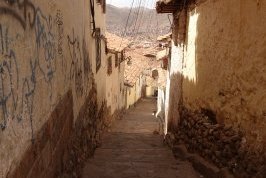
Cusco is a unique blend of a colonial city with the traditions of the Inkas. The colonial buildings often are set on top of Inka foundations and the city has a unique mountain feel to it. Personally, I enjoyed the San Blas Barrio the most which is tucked on a hillside to the North East of the historic city center.
Cusco is also a pretty touristy place as it serves as hub for the area. You will find plenty of Western tourist amenities. For instance, Cusco was the only place along my trip I managed to take a Yoga class.
For a Peruvian city Cusco felt comparatively dirty. I found both the central districts of Lima and Arequipa better upkept. In addition, the original Inka/colonial town layout is very narrow and illsuited for the amount of traffic the city nowadays has. This, though, is a problem Cusco shares with Arequipa and Lima. More pedestrian precincts would be a nice improvement.
Getting There
Cusco is well connected by both busses and planes to all parts of Peru and some parts of the world. Seeing the distances involved I would counsel to making use of the airport. From the airport you can either take a cab or a collectivo. The collectivo run directly in front of the exit. If you are a train aficionado there is also a train connection to Puno.
Altitude Sickness
Cusco may very well be your first stop on your trip above 3000m. As such altitude sickness may …
Keep reading 0 comments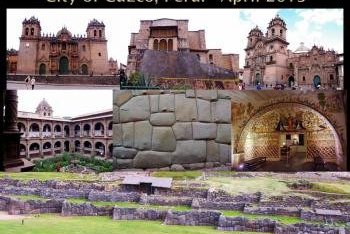
I have spent 6 month in Peru, in 2013. The city of Cuzco is undoubtedly of the most astonishing treasures of the country. It was the capital of the Inca empire. It embodies the association between the Inca culture and the colonial influence. Inca are present through the impressive walls that survived eathquakes, the layout of the city, the Temple of the Sun (combined with Santo Domingo church buildings) and the Sacsahuayman fortress above the city. Colonial architecture can be seen through the magnificent cathedral, churches, convents and secular building. Some of the religious buildings are fine examples of colonial art and real masterpieces, notably the Cathedral, Church of la Merced, Santa Catalina and the Iglesia de la Compania. Wherever you go in the ton you can be amazed by the traditional buildings, huge monuments and typical landscapes.
Altitude and cold can be surprising so prepare yourself.
Keep reading 0 comments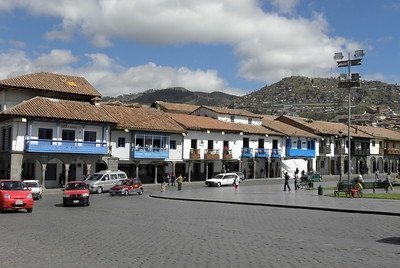
I first arrived in Cuzco from Arequipa after the bustrip-from-hell: 17,5 hours, driving over mountain passes at night in the snow. Cuzco then appeared to me as a dusty and chaotic large city. I ended up spending 4 nights there in total, before and after my trips to Machu Picchu and Manu National Park. The city nowadays essentially is a transportation hub for the region. It certainly has its merits but I did not like it that much.
In an hour or two you can visit the main sights of the historical center - the bling Cathedral, the disappointing Coricancha temple, and the original streets. What is left of the Inca times are merely some walls and sometimes the street pattern. Maybe the impression would have lasted more if I had seen Cuzco before Machu Picchu and Ollantaytambo.
Probably not included in the WHS are the Inca ruins of Sacsayhuamán. This is a walled complex on the northern outskirts of the city. It was used as a military fortress and had ritual functions as well. Its main defensive wall has an elaborate zigzag shape. It's a nice hike to get there from the city center, and the construction has been done as perfectly as the Incas knew how to do it.
Keep reading 0 comments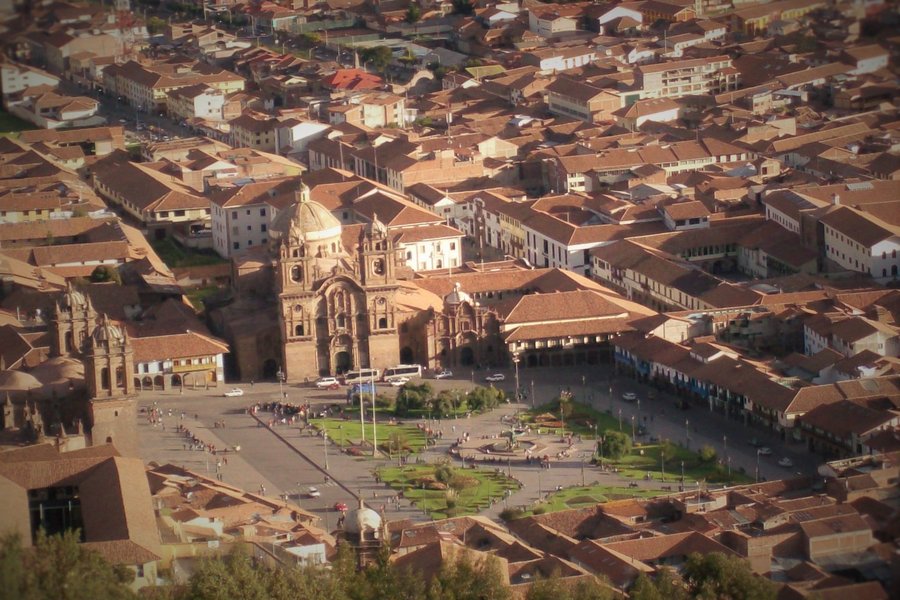
The high-elevation of Cuzco will become apparent as soon as you walk up some stars. When I travelled here, we were lucky enough to arrive during festival time, men, women, and children dancing in the streets and playing music.
Haucaypata (Plaza de Armas)
Entering this space in Cuzco produces a different feeling than other city centers, because you are at the central point of the Tawantinsuyu (Incan Empire). "The Hauk’aypata Square was the origin of the four Qhapaq Ñan roads that extended in different directions towards the “four parts of the World”, connecting, dynamically and efficiently, villages and tambos of different sizes and hierarchies in the Tawantinsuyu universe depending on the role, function of symbolism in relation to Cusco (Guaman Poma de Ayala, 1615)." - Qhapaq Ñan Nomination File
Four Roads: Antisuyu, Qollasuyu, Kuntisuyu and Chinchaysuyu
Best preserved route (Antisuyu) of the Qhapac Nan in Cuzco (Google Maps), near inscribed associated historic sites such as Totorapaccha.
Sacsayhuamán Extension?
Sacsayhuamán is not part of the Cuzco world heritage site, nor is it a component of the more recently inscribed Qhapac Nan serial property. Yet, I do hope it might be nominated as an extension sometime in the future. Regardless of its world heritage status, the views from Sacsayhuamán looking down into Cuzco are exceptional.
Keep reading 0 comments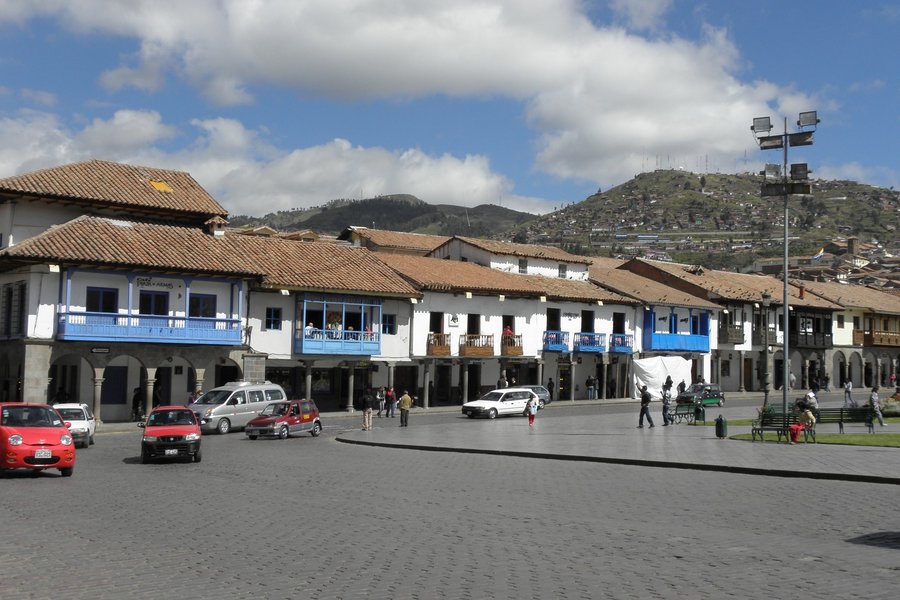
Very interesting city with great food and extraordinary art and churches. Plan a day for the city along and extra for the surrounding ruins. You may have altitude sickness problems. The city was more interesting than expected and I wish I had scheduled extra time.
Keep reading 0 comments
